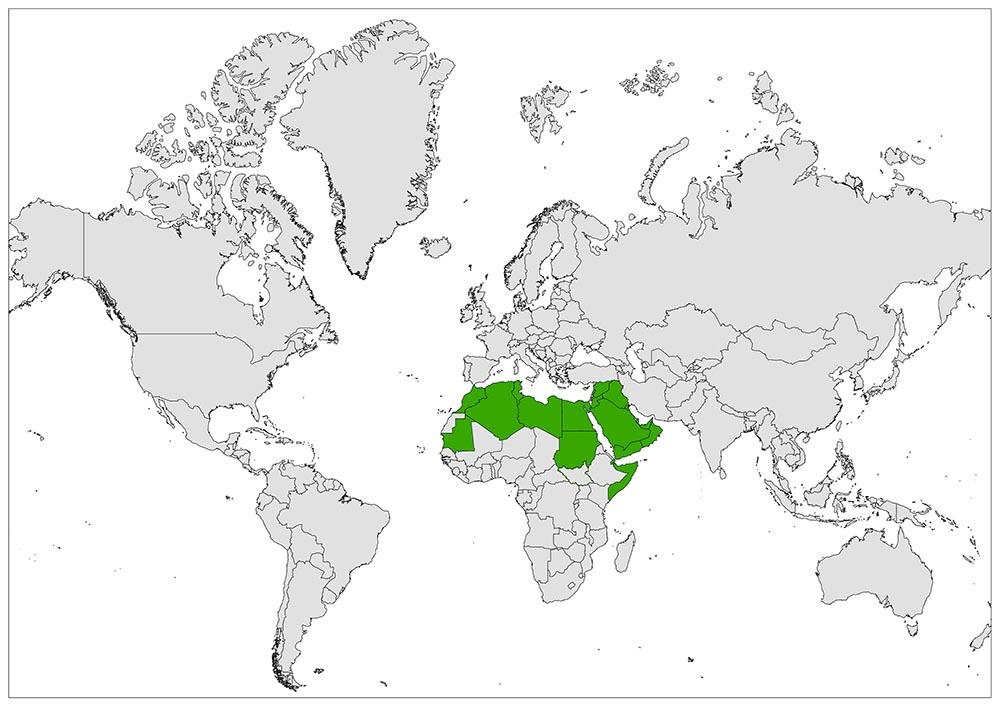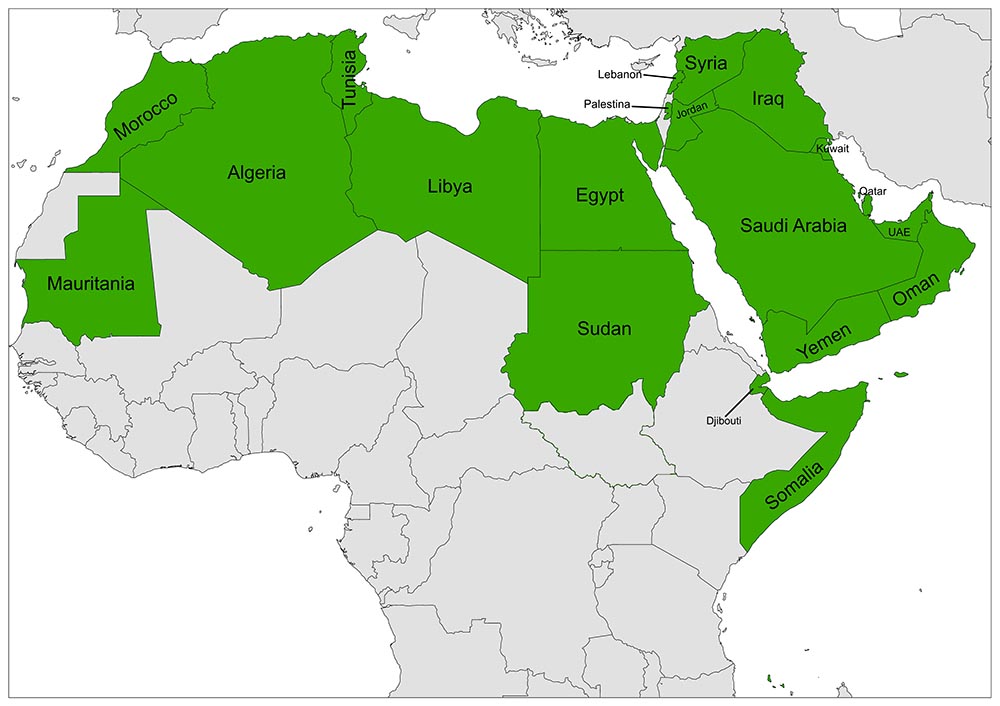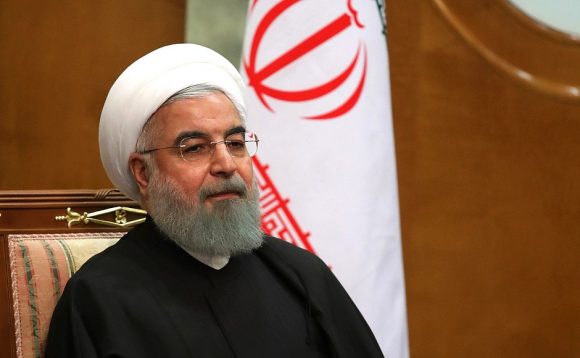Arabic name “Jami’at ad-Duwal al-‘Arabiyya” is an international organization. Currently, 22 Arab countries are actively Arab League Members.
Although the first steps of this alliance were carried out in Iraq and Saudi Arabia in 1936, basically the bases were laid in the 19th century. The basic ideology was the idea of building an “Islamic Union” by Islamic leaders.

Today, the first foundation of the Arab League was laid in 1944 under the “Alexandria Protocol”. Subsequently; On March 22, 1945, the official establishment in Cairo was made between Egypt, Iraq, Jordan, Lebanon, Saudi Arabia and Syria. The ultimate goal is; economic, cultural, political and social relations.
Moreover, the Union established a common market in 1965. In addition, general Secretary Ahmed Abu Gayt, the chairman of the parliament is Ali El Dakbaasi. Furthermore, the state is in the status of a permanent observer of the Union Republic of Turkey.
Map of the Members of Arabic Union

List of Arab League Members
- Iraq
- Syria
- Lebanon
- Jordan
- Saudi Arabia
- Bahrain
- Qatar
- United Arab Emirates
- Oman
- Yemen
- Kuwait
- Egypt
- Libya
- Tunisia
- Algeria
- Morocco
- Mauritania
- Sudan
- Somalia
- Palestine
- Djibouti
- Komor
Structure and Management
Council: It is the highest governing body of the Union and usually convenes at the level of foreign ministers. Also, every member has one vote, and the binding of decisions is only concerned with the voting countries.
Population and Religion

The total population of the association is 407 million people as of 2016. Among the member countries of the Union, Egypt is the most populous country with a population of 96 million. Also with a population of 942,333, Djibouti is the member country of the Arab League with the least population. Furthermore, the vast majority of the member countries of the Union are Muslims. This is followed by Christians and Jews respectively.
The countries where Muslims are most prevalent among the members are Yemen, Somalia, and Mauritania with 99%. Lebanon is the country with the highest percentage of the population, with 41%. Is not it amazing? It is understandable that Christianity is the second largest religion of the union.
Let us look at the individual religious beliefs of these member countries.
- Algeria: 90% Muslim, 6% Christian, 4% Other
- Bahrain: 70% Muslim, 15% Christian, 15% Other
- Comoros: 98% Muslim, 2% Christian, N / A
- Djibouti: 94% Muslim, 6% Christian, N / A
- Egypt: 90% Muslim, 10% Christian, N / A
- Iraq: 95% Muslim, 4,3% Christian, 0.7% Other
- Jordan: 92% Muslim, 6% Christian, 2% Other
- Kuwait: 85% Muslim, 7% Christian, 8% Other
- Lebanon: 54% Muslim, 41% Christian, 5% Other
- Libya: 97% Muslim, 2.4% Christian, 0.6% Other
- Mauritania: 99% Muslim, 0% Christian, 0% Other
- Morocco: 98,7% Muslim, 1,1% Christian, 0,2% Other
- Oman: 85,9% Muslim, 6,5% Christian, 7,6% Other
- Qatar: 67,9% Muslim, 13,8% Christian, 18,5% Other
- Palestine: 90% Muslim, 9.8% Christian, 0.2% Other
- Saudi Arabia: 97% Muslim, 1.3% Christian, 1.7% Other
- Somali: 99% Muslim, 0% Christian, 0% Other
- Sudan: 97% Muslim, 1.5% Christian, 1.5% Other
- Syria: 87% Muslim, 10% Christian, 3% Other
- Tunisia: 98% Muslim, 1% Christian, 1% Other
- United Arab Emirates: 76% Muslim, 13% Christian, 15% Other
- Yemen: 99% Muslim, 0% Christian, 0% Other
Participation Years of Members
Yemen is the joined in 1945 to the union after founding members, Jordan, Syria, Lebanon, Saudi Arabia, Iraq and Egypt.
Arab League Members who joined after 1945:
- 1953: Libya
- 1956: Sudan
- 1958: Tunisia, Morocco
- 1961: Kuwait
- 1962: Algeria
- 1971: Bahrain, Qatar, United Arab Emirates, Oman
- 1973: Mauritania
- 1974: Somali
- 1976: Palestine
- 1977: Djibouti
- 1993: Comoros

Syria
Due to the inward movements, the Arab League took on the membership of Syria in 2011 and received a number of embargoed application decisions. Furthermore following this, the Arab League convened in Cairo and made a number of talks related to the fate of Syria. While the joint decision was directed towards sanctions against Syria, there were also countries that opposed it.
These countries were Lebanon, Algeria, and Yemen. In addition, at the same time, the union took a number of sanctions on Syria’s refusal to implement democratic reforms. While the democracy level of the countries included in the Union is obvious, it is the greatest irony ever to take a decision to take sanctions against Syria for this reason.
Iran

Contrary to popular belief, Iranians are not Arabs but Persians. There is no trust, no ties to the Arab League, or no accession talks. Already; in the past days, the union gathered in Cairo under the leadership of Saudi Arabia against Iran. In addition, all members were invited to come to this extraordinary meeting to discuss the interventions in the region of Iran. Furthermore, the union called on Iran to supply a missile to Hus, calling for a common Arab attitude to stop the interventions in Tehran’s territory.
Palestine
In fact, it is not surprising that this union, which was founded with the help of the English, often does not vocalize what has been done against Palestine, which is called the “orphan”. Therefore they have been silent many times against Palestine from the past to the present day. Furthermore, most of the Arab League’s brainwashing organizations, which did not voice the Israeli operations in Liban and Palestine, were under heavy criticism.
Nevertheless, the union continued to find it appropriate to remain silent. In addition, there were even rumors among people that “Chavez should lead this union” for that period that is relevant to it. The reason for this was that Chavez, who was angry that his union was silent, fired the Israeli Ambassador from his country. Furthermore, the embargoes that the Arab League imposed against Israel to date have occurred in 1948 and 1993.